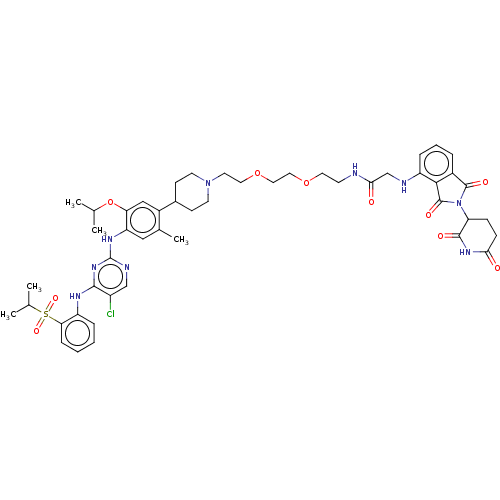Affinity DataIC50: 10nMAssay Description:Induction of ALK degradation in human NCI-H3122 cells after 16 hrs by immunoblot methodMore data for this Ligand-Target Pair
Affinity DataIC50: 10nMAssay Description:Induction of ALK degradation in human NCI-H3122 cells after 16 hrs by immunoblot methodMore data for this Ligand-Target Pair
Affinity DataIC50: 40nMAssay Description:Induction of ALK degradation in human KARPAS299 cells after 16 hrs by immunoblot methodMore data for this Ligand-Target Pair
Affinity DataIC50: 50nMAssay Description:Induction of ALK degradation in human Kelly cells after 16 hrs by immunoblot methodMore data for this Ligand-Target Pair
Affinity DataIC50: 50nMAssay Description:Induction of ALK degradation in human Kelly cells after 16 hrs by immunoblot methodMore data for this Ligand-Target Pair
Affinity DataIC50: 180nMAssay Description:Induction of ALK degradation in human KARPAS299 cells after 16 hrs by immunoblot methodMore data for this Ligand-Target Pair


